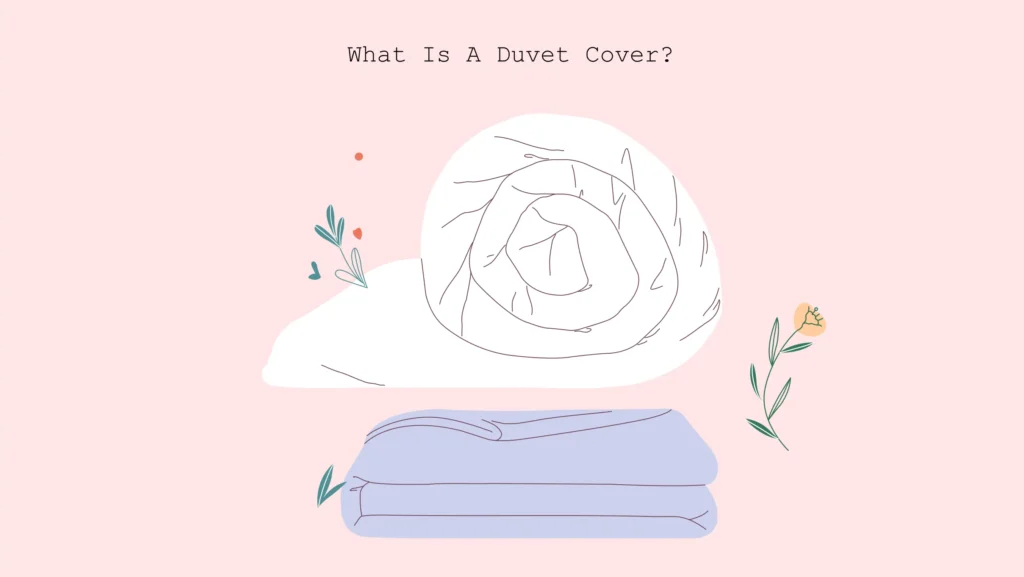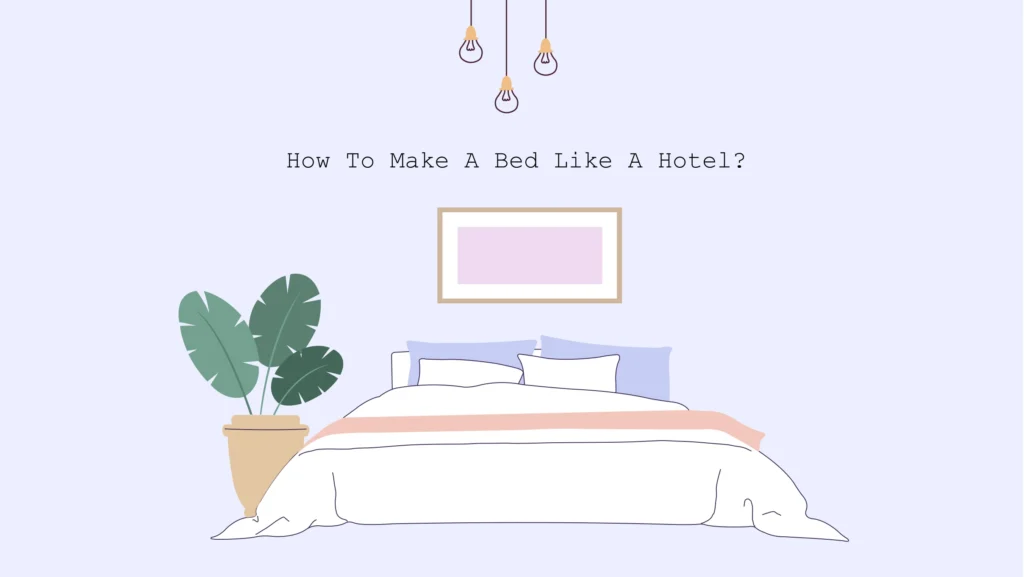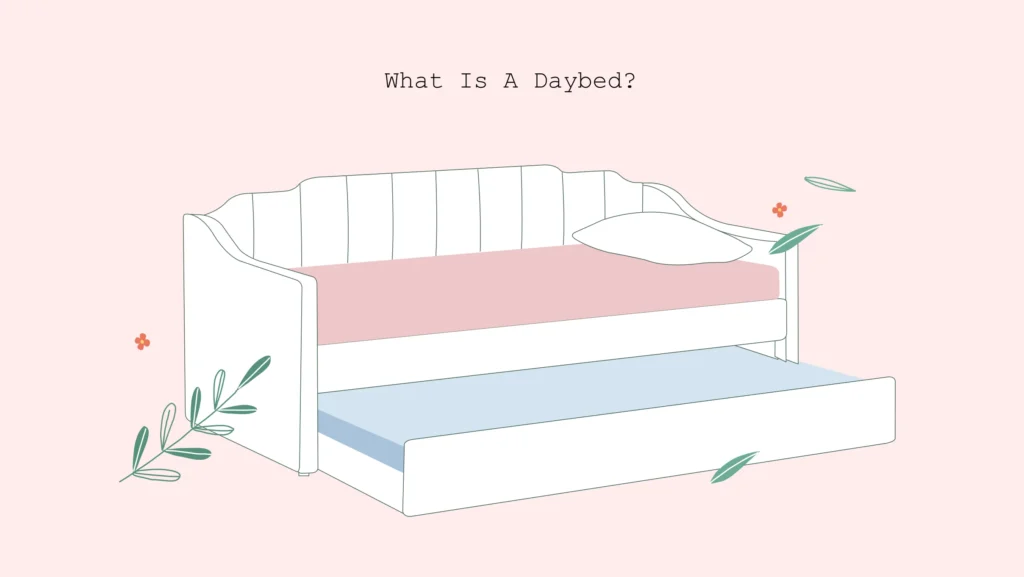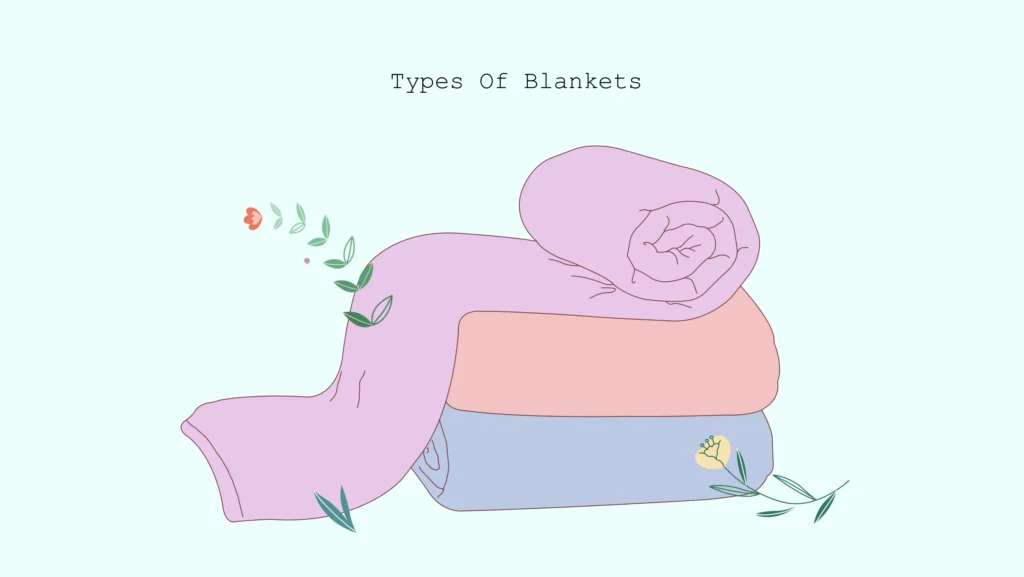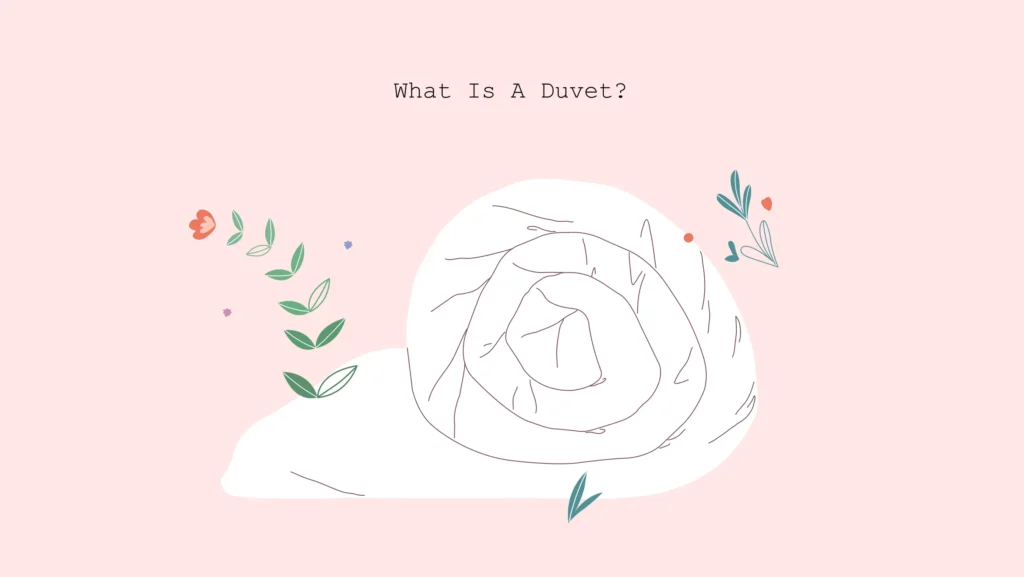Foam vs Spring Mattress: Which Is Best?
Written by

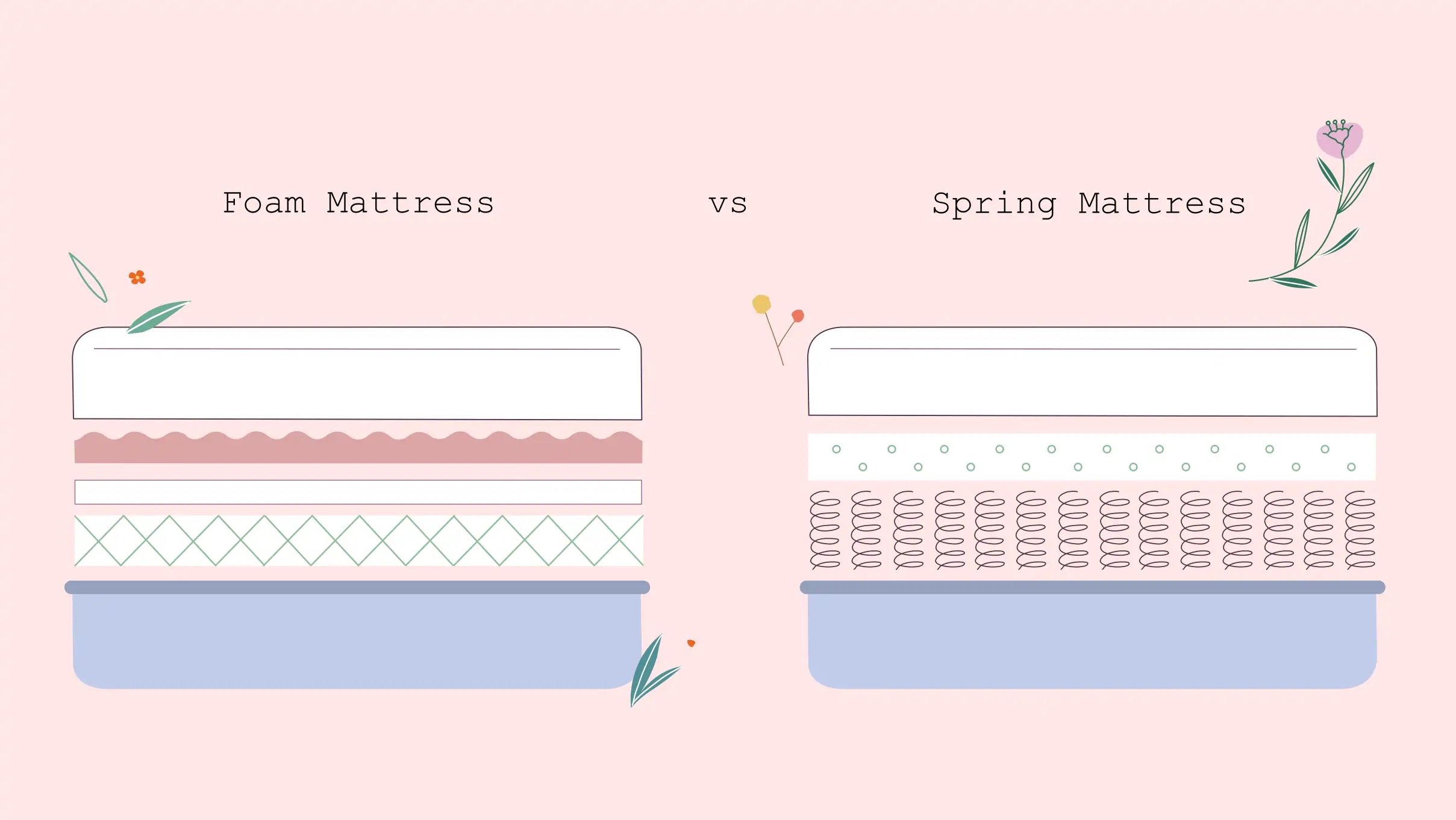
Upon entering the mattress showroom, you’re perplexed with bountiful types of mattresses. You notice each mattress wrapped in premium packaging, offering specific properties – it can undoubtedly be an overwhelming process. But, do you know it all narrows down to one simple decision – foam vs spring mattress? Although foam mattresses are predecessors of spring mattresses, there is no dearth in their features. Someone searching for a pressure-relieving, body-conforming mattress will find memory foam mattresses wholesome. Whereas people looking for a bouncier feel with more give need to grab an innerspring mattress.
Difference Between Memory Foam and Spring Mattress
To experience a respite from the age-old confusion between memory foam vs spring mattresses, you need to consider the significant differences between them.
| Parameters | Foam Mattress | Spring Mattress |
|---|---|---|
| Durability | More durable The absence of coils reduces sagging | Less durable The coils might start poking or sagging |
| Support | Body conforming in nature | Firm support Less supportive |
| Bounce | Less recovery time Less bouncy | Bouncier due to coils |
| Pain-relief | Conforms to the body Provides pressure points relief Aligns with the natural spine curvature | Fails in body-conforming Causes pain in pressure point |
| Motion-isolation | Great at motion-isolation | Poor motion-isolation Due to densely connected coils |
| Temperature-Balance | Retains heat The latest ones contain cooling technologies | Coils increase airflow |
| Price | Around Rs. 8, 000 to Rs. 22, 000 and above | Around Rs. 6, 000 to Rs. 15, 000 |
What Is a Foam Mattress?
Do you know foam was invented by NASA back in the 1960s? Surprising isn’t it? The foam mattress that we sleep on is made of polyurethane foam material, also referred to as synthetic viscoelastic memory foam. Tired of all technical terms? Let us get moving with the types & advantages of choosing a foam mattress. People looking for a mattress that offers sensitivity to body weight and temperature, need to opt for this mattress.
Foam mattresses are intricately designed in a matrix-like formation. The moment you lie on this mattress, it not only balances your body temperature but also softens the surface providing a hugging effect. Since foam mattresses are highly equipped with body-conforming features, they relieve pressure points.
Good news to side or back sleepers, memory foam mattresses will act as a boon and add to your spinal alignment.
Types of Foam in Mattresses
Before you hastily choose a foam mattress between foam mattress vs spring, certain segregations of foam need to be understood.
Polyurethane
The foam made from polyurethane, popularly known as polyfoam, is a common ingredient for making foam beds. It offers bounce and flexibility, unlike memory foam. Polyfoam is layered not only in all-foam mattresses but also as the topmost relaxing layer in spring mattresses.
Polyurethane also has three categories:
- Regular Polyfoam: A relatively soft foam placed in the transition layers
- High-Density Polyfoam: It is frequently used as underlying support layers because of its firmness
- High-Resiliency polyfoam: Firmer, and more confirming but expensive, therefore, quite uncommon
Memory Foam
Most popular among foam mattresses, memory foam mattresses incorporate similar polyurethane material alongside newer ingredients for boosting density. Pressure relief is the best feature of owning a memory foam mattress since it contours the body. Ever wondered why it is called ‘memory’ foam? The word ‘memory’ refers to the material’s competence in retaining the body’s shape after indenting.
The categories of memory foam are:
- Standard Memory Foam: The traditional one, filled with softness, cushioning, and not so heavy on the pocket
- Open-Cell Memory Foam: Elaborately designed with openings in the tiny cells of foam promoting breathability.
- Gel Memory Foam: Quite a popular one because of its cooling technology, it is made of tiny gel beads.
Latex Foam
Latex is an organic foam that comes with a rubber-like material. It is bouncy and durable. It is more expensive and has different categories.
- Dunlop Latex: This is constructed by incorporating a traditional process resulting in a firmer feel.
- Talalay Latex: This is an energy-driven process producing bouncier yet softer latex.
Pros and Cons of Memory Foam Mattress
The pros and cons of a memory foam mattress would help the audience understand which one to choose foam vs spring mattress.
Pros:
- Soft feel and adapts to the pressure points offering relief
- Great at motion isolation
- Suitable option for side and back sleepers
Cons:
- Retains heat
- Poor response to movements
- Off-gassing
- Can be expensive
What Is a Spring Mattress?
When it comes to foam vs spring mattresses, the latter appeared way before the former. The spring mattress was first introduced by Heinrich Westphal. These are popularly known as innerspring mattresses and are composed of an endless number of metal springs offering underlying cushioning. If you are a heavy sleeper, chances are high that you will be loving the supportive layer blended with plush materials.
Since spring mattresses are primarily made of coils, a quality queen-size bed generally comprises 400 coils or higher. But it doesn’t necessarily mean with greater coil count will come greater comfort. The comfort layers, thickness, quality, and material are other crucial factors in play.
Types of Spring
Following the step of foam mattress, spring mattress also comprises certain types. The segregation is mainly based on springs or coils. Before concluding between foam vs spring mattresses, learn what all spring mattresses have to offer in their variations.
Bonnell Coils
Bonnell coils were common during the initial making of spring mattresses, and it’s still in use. Features include hourglass shape, customised softness and firmness depending on the wire gauge. These are affordable and simplistic.
Pocket Coils
These are individually wrapped coils in fabric, and quite in trend. It offers the liberal movement of each coil, thereby reducing noise as well. Quality beds are composed of pocket coils and are undoubtedly on the pricier side. It offers pressure relief and an overall buoyant feel.
Offset Coils
This is quite similar to pocket coils but is connected with hinged wires. Here, the coils flex when under soft pressure, but offer firm support when required.
Continuous Coils
This features a single wire that is used to develop a complete row of coils. Each row is then connected using helical wires. The whole structure is very firm, and therefore, this particular type cannot completely adapt to a body profile.
Pros and Cons of Spring Mattress
To understand in depth the differences between spring mattresses vs foam mattresses, the former’s pros and cons need to be studied holistically.
Pros
- It’s affordable
- Bouncy and offers responsiveness
- Offers good support and firmness
- Offer coolness due to airflow between coils
Cons
- It might be noisy resulting in disrupted sleep
- Might be too firm for some sleepers
Which One Is Better: Foam or Spring Mattress
Both foam vs spring mattress are available in supreme quality, with perfect thickness, and proper support, and filled with all other features. You need to choose the correct model to go with. Just certain factors to keep in mind, foam mattresses are generally considered by most people because they act as all-rounders with advanced quality foam, pressure relieving features, motion isolation, body-conforming features, and most importantly quite a good catch for side sleepers.
People who don’t wish to spend much alongside residing in a humid region may opt for a spring mattress as the coils offer airflow. But again, if you can spend a bit extra, opt for memory foam mattresses with cooling gel beads. For heavy stomach sleepers, the best mattress are spring, firm, or hybrid mattresses. Since too soft a mattress will lead to excess sinkage among these sleeper types.
Therefore, between memory foam or spring mattresses, the choice is completely yours after weighing all the pros and cons.
Conclusion
Apart from analysing all the advantages and disadvantages of spring or foam mattresses, there is another practical option offered by most manufacturers – The Trial Period. If you are confused, you can always try the product during the trial period and understand if this is your dream product.
FAQs
What type of mattress is best for back pain?
Memory foam or orthopaedic mattresses are best for back pain as they are ergonomically designed for reducing backaches, improving posture, increasing blood circulation, and dispersing the body weight properly.
How much do a memory foam mattress and spring mattress cost?
A memory foam mattress is costlier than a spring mattress. The former starts from a range of around Rs. 10, 000 and continues above Rs. 22, 000. Whereas, spring mattresses’ costs rotate from Rs. 6, 000 to Rs, 15,000.
Which lasts longer foam or spring mattress?
Foam mattresses tend to last longer than spring mattresses because they don’t have coils in them. The coils in innerspring mattresses sag, rust, and lose tension over time resulting in sagging. If the coils are of cheap quality, they will sag in as less as 3 years.
people like this article
Written by




